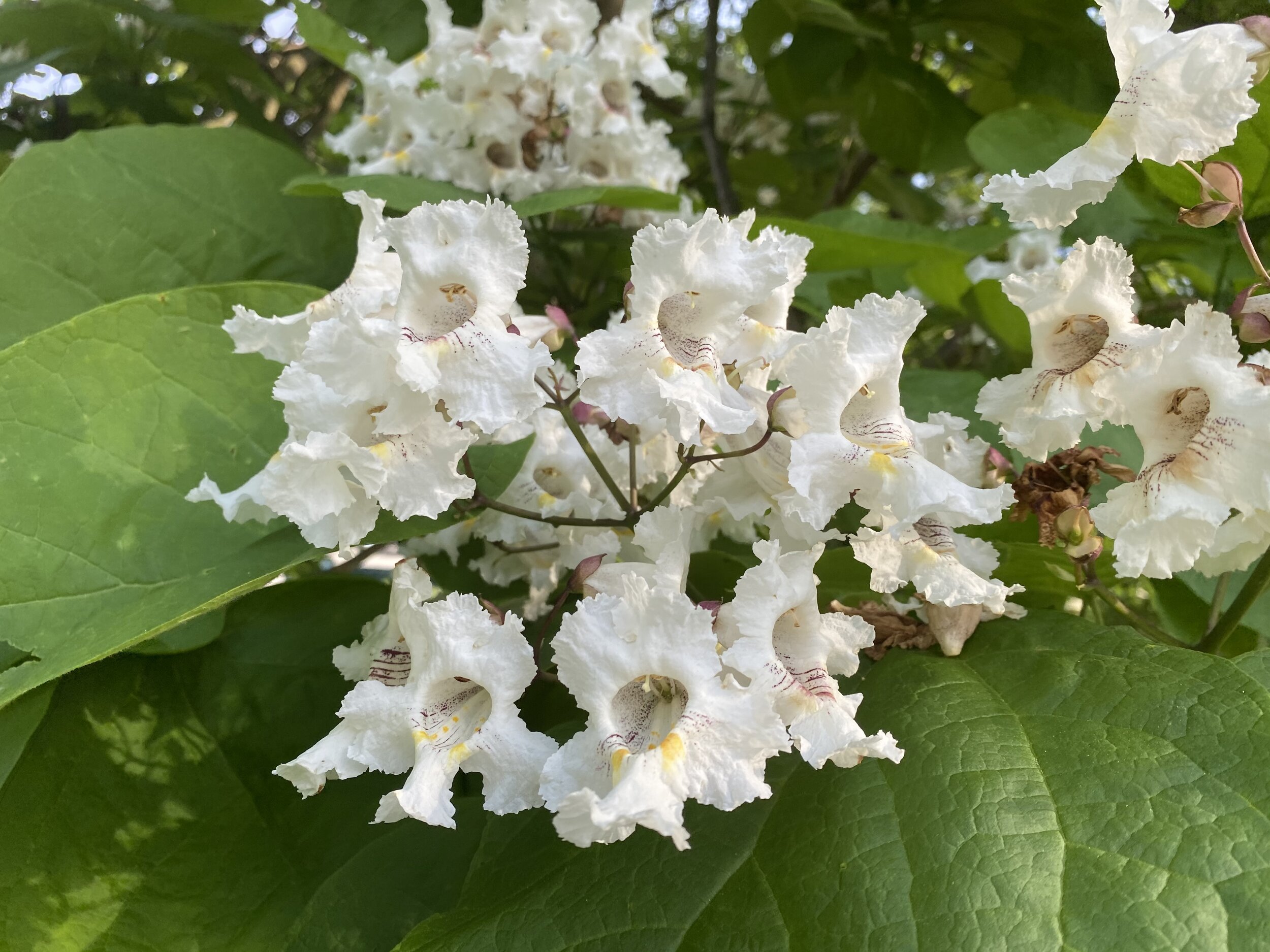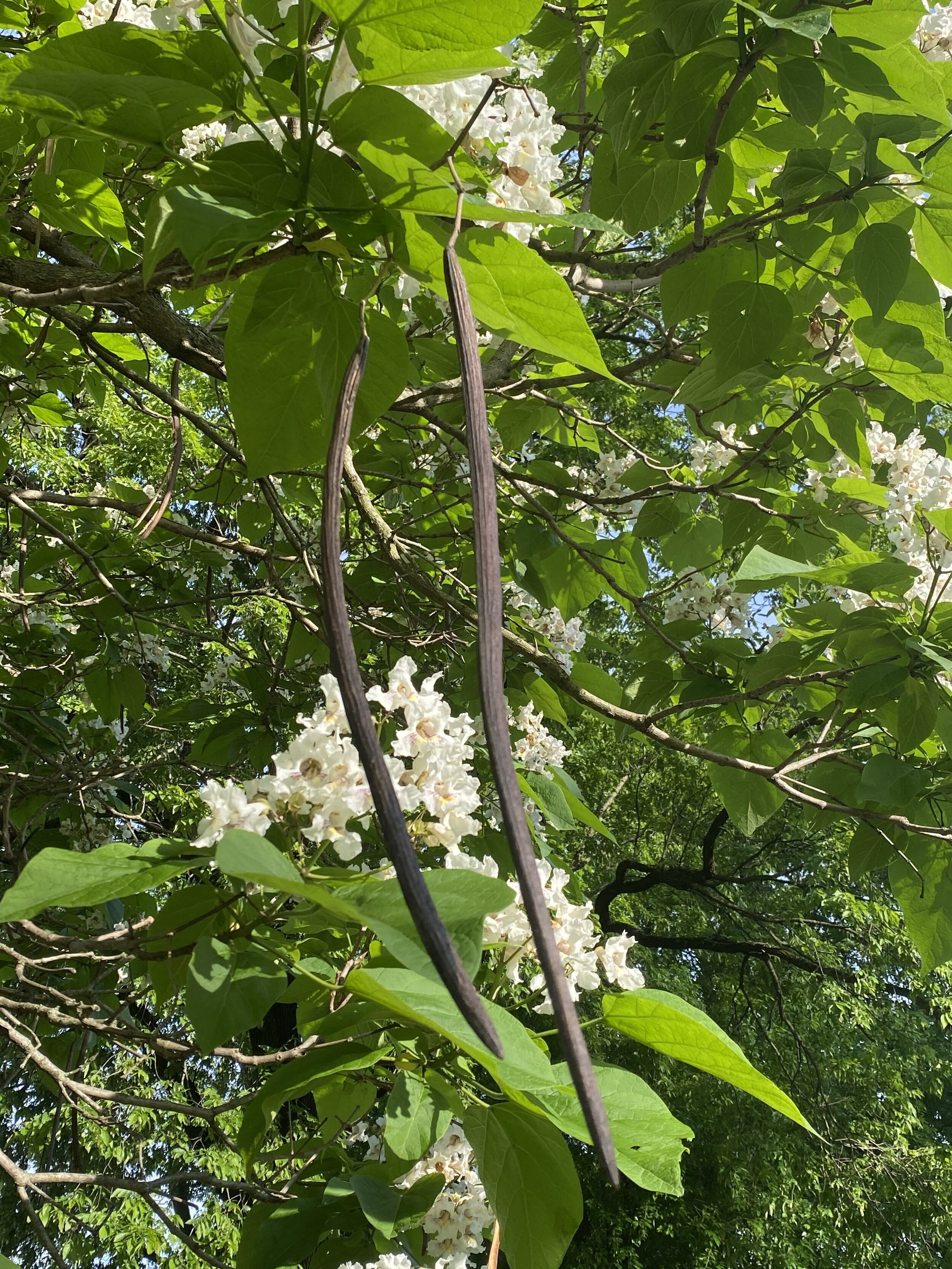by nashtreefound
Share
Share




As communities across the nation begin the stepwise process of opening up, I did a test run this past weekend and ventured farther from home and away from my immediate neighborhood. With no particular destination in mind, I just drove around and through Vanderbilt’s campus and Centennial Park where what appeared to be large snowflakes falling in slow motion caught my eye. Fortunately, I was passing a vacant parking lot that instantly became my destination so I could investigate this odd occurrence.
Giant snowflakes on a warm sunny day in May? Yes, the ones so large that they look like ping pong balls falling in slow motion and the slightest breeze alters their gentle descend to the ground below. I quickly realized that it was time for that annual reunion, one of several that always sneaks up on me but one that I welcome with great affection, the flowering of the catalpa trees! I usually experience this occasion alone as I have found that there is not a lot of love out there for the catalpa.
Despite having been prized by gardeners and grown by many nurseries over the years, catalpa has not been seen on any list of recommended trees to plant that I have come across in my 25-year long career. This has to change! It is true that catalpa, specifically northern catalpa (Catalpa speciosa) is a large tree and is not appropriate for most residential landscapes but where space is not limited this tree deserves to be planted among all the other deciduous shade trees that are considered by most to be far superior. Why must we sacrifice showy flowers when the situation calls for a deciduous shade tree? All of the lists, books, and experts would lead you to believe we must as they bore us with this maple and that maple, and oak, and elm, and well, you get my point but I want some flowers with my shade even if they only last a week to 10 days.
How can you not appreciate and marvel at THIS shade tree with its thick, coarse branches, its large, bold heart-shaped leaves, and its foot-long bean-shaped fruit that never cease to pique the curiosity of kids and adults alike, but the ultimate prize are its flowers. Large white flowers each with the most intriguing purple pollinator guide markings are produced in compacted, dense panicles at the ends of almost every branch. What is not to like about this magnificent tree? To me, it will always be king of the park, cemetery, or campus landscape for it is here where the catalpa tree has the space to spread its branches and strut its stuff!
Once again, I have been reminded why reunions are so special, just as someone, or some tree, has faded from you heart and mind, you instantly fall in love again when you are reunited. This past Sunday, I fell in love again, no, I was reminded of my deep love and affection for the catalpa and knowing that large snowflakes in May would soon be gone, I laid beneath its branches and watched as each one fell slowly to the ground.
Andrew Bell, Ph.D. Executive Director, Nashville Tree Foundation
Emerald Ash Borer in Nashville It all started when… …the Emerald Ash Borer migrated in packing materials from Asia. First discovered in Detroit, Michigan, in 2002, the pest has already destroyed millions of
Yes, these three things are linked together, not just in name but biologically as well. But first things first… the cedar (aka redcedar or eastern redcedar) is not a cedar at all, at
Black Locust, Birthdays, and Phenology How does a bear know when it’s time to hibernate, when does a migratory bird start its southward journey for the winter, or how does a tree know
In honor of the “Lily Tree with Tulips” Sounds interesting, right? Sounds pretty as well. Where do I get one? Well this tree can be easily acquired and it is widely planted around

